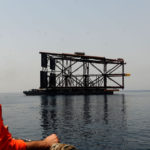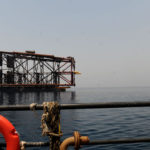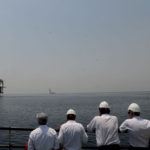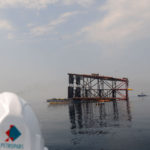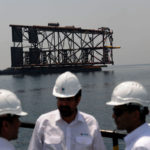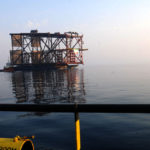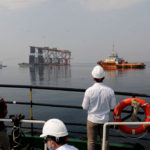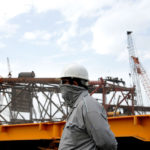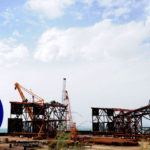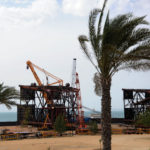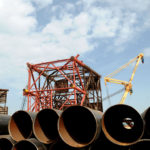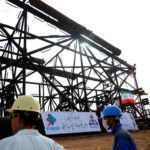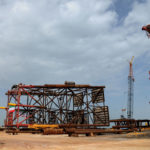Lithium producers do not feel threatened by Tesla’s plan to produce lithium in Nevada. Miners, as well as analysts, believe that despite the recent drop in lithium prices, the industry is in for a supply shortage after 2025 as automakers significantly ramp up electric vehicle (EV) production. Massive amounts of additional lithium supply will be needed to support not only the EV revolution but also the expected surge in stationary battery storage to support the wider adoption of renewable energy.
Therefore, lithium mining companies and researchers are looking to develop innovative ways to produce lithium more efficiently, in order to meet what they expect will be growing demand from the automotive sector in the coming years. Tesla, for its part, is looking to source its own lithium in the United States in a more environmentally friendly way, Elon Musk said on Tesla’s Battery Day last week.
Lithium extraction needs to “reinvent” itself to meet demand, the chief executive of Standard Lithium, Robert Mintak, told Bloomberg in a recent interview.
“We’re not going to be saddled with 20-year-old processes and refining capabilities,” Mintak told Bloomberg.
Standard Lithium has just launched its direct lithium extraction project near El Dorado, Arkansas. Standard Lithium uses a proprietary and environmentally friendly technology that selectively extracts lithium ions from tail brine that is a byproduct of existing bromine production facilities, the company said in September. Compared to the conventional methods for recovering lithium from brine, the process significantly reduces recovery time to several hours versus as long as a year, and the rate of recovery is 90 percent versus 40-60 percent in conventional production, according to Standard Lithium.
Earlier this year, a team of researchers from Australia’s Monash University, Australia’s national science agency CSIRO, the University of Melbourne, and the University of Texas at Austin, said they had developed a new filtering technology to extract lithium ions from brine. This technology has a much higher recovery rate than current extraction techniques and cuts the extraction process time down to just a few hours from several months to years in current lithium extraction and could potentially cut the production costs of one of the key components of lithium-ion batteries.
Tesla is also moving into lithium extraction, Musk said on the Battery Day, noting that “Basically, there’s so much damn lithium on Earth it’s crazy.”
According to Tesla’s CEO, Nevada alone holds enough lithium to convert the entire U.S. vehicle fleet into electric. Tesla has rights on over 10,000 acres of a lithium clay deposit in Nevada, from which it plans to extract lithium.
Tesla will also aim to “reinvent every aspect of cell production, from mining the ore to a complete battery pack, because it’s the fundamental constraint. We’re not getting into the cell business just for the hell of it, it’s because it’s the fundamental constraint, it’s the thing that is the limiting factor for rapid growth,” Musk said.
Stocks of lithium producers plunged in the wake of Tesla’s announcement, but analysts believe there will be more than enough room for everyone in the market, considering the increase in EV production and stationary storage installation globally.
“We appreciate Tesla’s goal to secure its raw materials supply. However, we disagree with the claim that Tesla will be able to supply all its own lithium. While we view lithium as an abundant resource, with lithium present in ocean water, nearly all of the world’s lithium is not economically viable to extract at current prices,” Seth Goldstein, a senior equity analyst for Morningstar, wrote after Tesla’s Battery Day.
According to Morningstar, Nevada could supply less than half of U.S. demand for EVs in 2030.
“Even if Tesla was to produce some lithium, we think greater demand would sop up the new supply, leaving our long-term lithium price forecast intact,” Morningstar’s Goldstein said.
According to Wood Mackenzie’s Accelerated Energy Transition (AET) scenario, which sees global warming limited to 2.5 degrees Celsius, the world’s lithium market could surpass 1 million tons of lithium carbonate equivalent (LCE) in 2025.
“However, except for a small group of companies, OEMs are yet to take the plunge with investing in mining assets. If OEMs do not choose to secure their own supply, Wood Mackenzie says EV sales penetration rates are unlikely to surpass 15% in the medium term,” the consultancy noted.
With many legacy automakers unveiling EV models and plowing billions of U.S. dollars into electric mobility, global demand for lithium will grow this decade, and the market will need every new efficient method of extraction, be it from lithium producers or carmakers invested in lithium mining assets.
Hydrogen, A Low Carbon Energy Source of the Future
It’s official: The big hydrogen techlash is now history. For decades, there was an undeniable and growing animus towards anything hydrogen by the investing universe, with the technology relegated to niche corners of the market, such as material handling and emergency power backup. Hydrogen technology was considered too costly and impractical, with Tesla Inc. CEO Elon Musk famously dismissing hydrogen fuel cells as ‘fool cells’ and ‘mind-bogglingly stupid.’
But the tide has gone full circle, and suddenly Wall Street can’t stop gushing about the enormous potential of the plentiful, versatile gas to cut emissions from many hard to decarbonize sectors.
Bank of America is the latest analyst to chime in with a bullish note.
According to the giant investment bank, hydrogen could supply our vast energy needs, fuel our cars, heat our homes, and also help to fight climate change. BAC says we have reached the tipping point of harnessing this element effectively and economically and predicts the hydrogen marketplace to reach a staggering $11 trillion by 2050.
BAC has likened hydrogen to smartphones pre-2007 and has advised investors to double-down before it goes fully mainstream.
Hydrogen fuel cell propulsion system
BAC is hardly alone in this adulation.
Morgan Stanley has upgraded Plug Power Inc. (NASDAQ:PLUG) from Equal Weight to Overweight with a $14 price target after the leading fuel cell maker impressed during its investor day presentation. Morgan Stanley’s Stephen Byrd believes green hydrogen will become economically viable quicker than investors appreciate saying Plug Power’s deal with Apex Clean Energy to develop a green hydrogen network using wind power offers a chance to tap into “very low cost” renewable power and helps accelerate the shift to clean energy. Plug has a goal for over 50% of its hydrogen supplies to be generated from renewable resources by 2024.
PlugPower is no longer content to be viewed merely as a maker of fuel cells for forklifts. The company has announced a partnership with Universal Hydrogen to build a commercially-viable hydrogen fuel cell-based propulsion system designed to power commercial regional aircraft. The initiative will help bring Plug’s proven hydrogen ProGen fuel cell technology to new markets.
“Through this partnership, we are taking our first steps toward establishing a complete ecosystem for the aviation market, from powertrain to hydrogen solutions, ultimately enabling a global transportation system powered by green hydrogen,” says CEO Andy Marsh.
Plug shares have jumped 13.3% after the latest bullish notes and are now sitting on a 317.4% gain in the year-to-date.
The cost conundrum
Over the years, the hydrogen economy has endured many false dawns, mainly due to technical and, mostly, cost issues. This has led to a situation whereby wind and solar energy are now competitive with traditional fossil fuels in electricity generation, whereas hydrogen remains considerably more expensive.
For instance, fueling a hydrogen fuel cell vehicle (FCEV) in California costs around $16.50 per kilogram compared to $3.232 per gallon of regular petrol in the same state. Light-duty FCEVs are typically 2.5x more fuel-efficient than comparable gasoline-powered vehicles, which means that achieving price parity with gasoline would require that 1 kilogram of hydrogen sells for not more than $8.08. In other words, hydrogen costs need to fall by 50% to become competitive with fossil fuels.
Luckily, there’s hope on the horizon.
According to a recent report by the Hydrogen Council, “…scaling fuel cell production from 10,000 to 200,000 units can reduce unit costs by as much as 45%, irrespective of any major technological breakthroughs, and can impact multiple end-use cases. Scaling up to 70 GW of electrolysis will lead to electrolyser costs of less than $400 per kW.”
This already appears to be happening in California: FirstElement Fuel has reported selling hydrogen for $12 per kilogram plus tax for a total $13.11 per kilogram and expects prices to continue coming down as hydrogen production cost falls.
Currently, California has a network of 43 open retail hydrogen refueling stations, capable of dispensing more than 11,800 kilograms of hydrogen each day. That is enough to support nearly 17,000 light-duty FCEVs or more than double California’s fleet of 7,000 FCEVs ( 5,000 FCEVs in 2018).
Green steel
The hydrogen ecosystem has been expanding and has lately added a new application to its portfolio: Using hydrogen to manufacture green steel.
Back in April, Swedish steelmaker Ovako successfully used hydrogen instead of LNG in trial runs at its Hofors steel mill, managing to demonstrate that H2 had no effect on the quality of steel. This marked the first time that hydrogen had been used in commercial scale during steel manufacture.
Given that steel production accounts for ~7% of global carbon emissions, steel made from renewable energy is expected to become a multi-billion industry as countries move to decarbonize.
The Anti-Tesla
Not everybody is convinced about the hydrogen hype, though.
Barron’s Bill Apton says Wall Street has discovered hydrogen this year and that hydrogen stocks are a bubble. Apton says the huge runup by Plug Power, Ballard Energy, and Bloom Energy has left them trading at more than 50x future cash flow, making it hard for them to grow into their steep valuations. He notes that smaller hydrogen companies are up against big players and deep-pocketed manufacturers, including government-backed rivals in China and the likes of Cummins.
According to Apton, it could take a decade or more before environmentally-friendly hydrogen can become competitive with natural gas on a cost-basis, making hydrogen stocks better long-term picks than the cult stocks they have become.
Famous Wall Street short seller Andrew Left of Citron Research has been even more blunt, labeling PlugPower an anti-Tesla:
“$PLUG back to $7 as it is the Anti- Tesla. Why even look to short $TSLA when $PLUG is twice as expensive with a never profitable business,” tweeted the firm.
Citron has been negative on PLUG dating back to 2014.
Wall Street remains overwhelmingly bullish, with 8 out of 10 Wall Street firms covering the stock giving it the nod.
France Devotes €30 Billion to Energy Transition
The French government has launched a new Covid-19 recovery plan that includes €30 billion to invest in the energy transition.
The top priority is the creation of a hydrogen economy, with €2 billion to be invested by the end of 2022 and €7.2 billion up to 2030. The money will be used for R&D activities and industrial electrolysis development projects.
These figure show how much hydrogen has grown in importance in state-level energy strategies. The French government will present the country’s new plans for hydrogen on Sept. 8.
Enerplan, the French solar association, stressed the importance of solar in the production of green hydrogen. “PSolar production, along with other renewable energies, can form the basis of great ambition for the production of carbon-free hydrogen,” the trade body said. “The storage of renewable electricity is a challenge for the years to come, hydrogen coupled with solar parks is a particularly suitable response.”
The package includes €7 billion for building renovations. However, the only reference to renewables in this category is for renewable heat. Enerplan said that energy-related renovations should integrate self-consumption into buildings as much as possible.
“Whether it is heat or electricity, solar thermal and photovoltaic installations provide direct savings in carbon emissions,” Enerplan stated. “Regulatory measures must be taken urgently to facilitate the use of solar electricity for all buildings and for smart charging of electric cars.”
French renewable energy association SER welcomed the plan to accelerate building renovations.
“However, it is essential that the support systems for individuals become truly operational for all French households, both for overall renovation operations and for other types of work, and that the government can guarantee rapid processing of requests,” SER explained.
SER also said that a sustainable recovery will require ongoing support for renewable energy.
In addition, the French government has decided to allocate €11 billion to decarbonize the transport sector. In the electric vehicle sector, it has earmarked €100 million for the development of terminals for electric vehicles, to achieve the nation’s target of 100,000 terminals by 2021.
German-Russian Resources Forum Discusses Joint Hydrogen Economy
Business and government representatives and researchers from Russia and Germany want to establish a bilateral cooperation on hydrogen, the German-Russian Resources Forum (DRRF) announced after a meeting on 28 August. “Germany was, is and will remain dependent on energy imports, and hydrogen will play a central role in energy and climate policy,” Klaus Töpfer, former environment minister and patron of the DRRF said according to a press release. The development of a hydrogen economy was a great opportunity for both countries which were linked by an “energy partnership rich in tradition”. Thorsten Herdan, head of “energy policy – heat and efficiency” at the German energy ministry, said that international cooperations such as this one were necessary to advance the use of hydrogen as an energy carrier.
The working group has set out to explore approaches for the development of a joint hydrogen economy. The 40 participants spoke about hydrogen production technologies and infrastructure development as well as mutual hydrogen trade relations. In the next step, joint workshops are to be organized this year before the German-Russian Hydrogen Conference takes place on December 1 this year.
Germany relies heavily on imported fossil fuels such as oil and gas and, for both of them, Russia is one of the main suppliers. This dependence is often viewed, however, with scepticism both at home and abroad with tensions culminating in the US senate threatening “crushing sanctions” on companies connected to the construction of the new gas pipeline Nord Stream 2 through the Baltic Sea. Meanwhile, Russia is urging the country’s leading energy companies to quickly expand their hydrogen production capacities and is considering using the controversial offshore gas pipeline to transport the synthetic gas to Germany, media reported at the end of July.
US Awards $13.5m to Capture Carbon Dioxide Directly from Air
The US Government has announced $13.5 million (£10m) in funding for projects aimed at accelerating the capture of carbon dioxide directly from ambient air.
Funding will be shared over three years by three laboratory-led research projects, which are focused on different major approaches to capturing carbon.
A team led by the Department of Energy (DOE) Pacific Northwest National Laboratory will explore electrochemical approaches while the Agronne National Laboratory will focus on photochemical methods.
Another team led by the Lawrence Livermore Laboratory aims to understand the degradation processes that limit current methods using forms of chemical absorption.
Dr Chris Fall, Director of DOE’s Office of Science said: Direct air capture holds promise as an emerging technology with the potential to improve the environment while expanding sources of energy through the conversion of carbon dioxide to fuels and other chemicals.
Making this technology truly viable will require real breakthroughs in basic science and these efforts are important steps toward that goal.
Renewables Consumption by Region
Renewable energy consumption (including biofuels but excluding hydro) grew by 12.1%, below its historical average, although its increase in energy terms (3.2 EJ) was the highest on record and the largest for any fuel in 2019. By country, China was the largest contributor to renewables growth (0.8 EJ), followed by the US (0.3 EJ) and Japan (0.2 EJ).
Installation of South Pars Phase 11 Jacket
Loading of 1st South Pars Phase 11 Platform Jacket
Global Energy Ministers Plan Green Rebound from Coronavirus without China and US
Energy ministers from some of the world’s largest economies on Friday linked for an unprecedented global summit over how to put renewables at the centre of post-coronavirus recovery plans – but the US and China were absent from the ‘cloudroom’.
Danish climate & energy minister Dan Jørgensen claimed after the meeting that the “contours of a green coalition” had emerged from the 23-strong videoconference.
The global clean energy sector is pushing hard for massive economic revival plans being drawn up by governments to focus on a ‘green stimulus’ that turns the damage done by the pandemic into an opportunity to make progress in the climate fight – rather than throwing recovery cash at fossil and other ‘dying’ industries.
Friday’s event co-hosted by Danish government and the International Energy Agency (IEA) brought together energy ministers from a number of European nations – including Germany, France and the UK – along with the EU, plus others such as India, Canada, Indonesia and New Zealand. Company leaders and organizbirolations such as the International Renewable Energy Agency (Irena) also took part.
But the world’s biggest polluter, China, and its largest economy, the US, were absent from the discussions, which the co-hosts said marked the start of a initiative to link green industries and jobs to economic revival.
IEA executive director Fatih Birol said: “We have managed to bring together a diverse, high-level group of ministers, leaders of international organizations and prominent business people. By acting together, we can have far greater impact.”
Jorgensen added: “We are facing a huge task of restoring the world’s economies, but at the same time it also provides an opportunity to set a new green course for the world.
“The green transition must be an engine of the economic recovery we are facing. The support for the initiative and the agenda that we have set today is very uplifting.”
Asked by Recharge about the absence of the US and China from the meeting – and whether the global green stimulus initiative is weakened as a result – a spokesman for the Danish energy ministry said Denmark is actively working with individual US states and the Chinese government to promote clean energy.
The nations taking part were already involved in an IEA initiative focused on green economic stimulus, the spokesman added, when asked if China and the US federal government had been invited to participate.
 Iran Energy News Oil, Gas, Petrochemical and Energy Field Specialized Channel
Iran Energy News Oil, Gas, Petrochemical and Energy Field Specialized Channel




